How to Track Email Signups in Google Analytics

Tracking email signups in Google Analytics is easy to set up. Follow this guide and you’ll be tracking your signups in just a few minutes.
It’s terrible when there’s activity on your site that you’re BLIND to. What pages are people using? What calls to action are effective? Etc.
So in this post I’m going to show you exactly how to setup one of the most important pieces of data you can track.
An email conversion is one of the most important events that can happen on your website because it turns visitors into relationships.
Yet, surprisingly, so many indie businesses aren’t tracking email signups in Google Analytics!
Tracking email signups in Google Analytics is critical for understanding what pages on our site are EFFECTIVE at converting visitors to email subscribers.
And luckily, it’s a pretty easy thing to setup. So here’s what I’m going to walk you through:
- Create a “Thank You for Subscribing” page on your website.
- Tell your email marketing provider to redirect new subscribers to this new “Thank You” page. (I’ll show you how to do this for MailChimp and ConvertKit below.)
- Tell Google Analytics to track visits to this “Thank You” page as Goals.
Other Reasons to Track Email Signups
Why else would you want to track email signups in Google Analytics? Can’t you just find out how many signups you have through your email marketing tool?
Most email marketing tools (like ConvertKit or MailChimp, etc.) will show you how many signups you receive. But, if you track your signups in Google Analytics, you’ll be able to do much more, like:
- Easily switch email providers, without losing all your conversion and signup data. Most online businesses end up using more than one email service over the years, and this is a big benefit to tracking in Google Analytics.
- Assign a goal “value” to an email signup, so you can tell which pages are worth the most on your site.
- Feed your signup and conversion data to a reporting dashboard, where you can see all your important metrics in one place
Don’t worry about those advanced features just yet. The first step is simply to start tracking your email signups.
If you don’t already have Google Analytics installed, you can read this or watch this to do that now.
OK, let’s get started. Follow these steps to setup email signup tracking in GA:
1. Create a “Thank You” page on your website
This will be the page that every new subscriber will see as soon as they subscribe on your website.
When a new person subscribes, let’s send them to a custom page on your website instead of a generic page from your email provider.
Here’s the three things to do in this step:
- Create a new page on your website.
- Give it a URL you’ll remember like
/thanksor/subscribe-success. - Add content to this page suitable for a new subscriber. You’ll see ours, for example, if you signup for any of our free guides. (Note: you can come back later and spend some quality time on this.)
Helpful links for this step:
- Here’s a great article on what content you can put on your thank you page.
2. Set a custom “Thank You” URL in your email provider
Now we need to tell our email marketing tool to send each new subscriber to our brand new “Thank You” page.
Below I’ll show you how to do this in both MailChimp and ConvertKit.
Custom Thank You Page in Mailchimp:
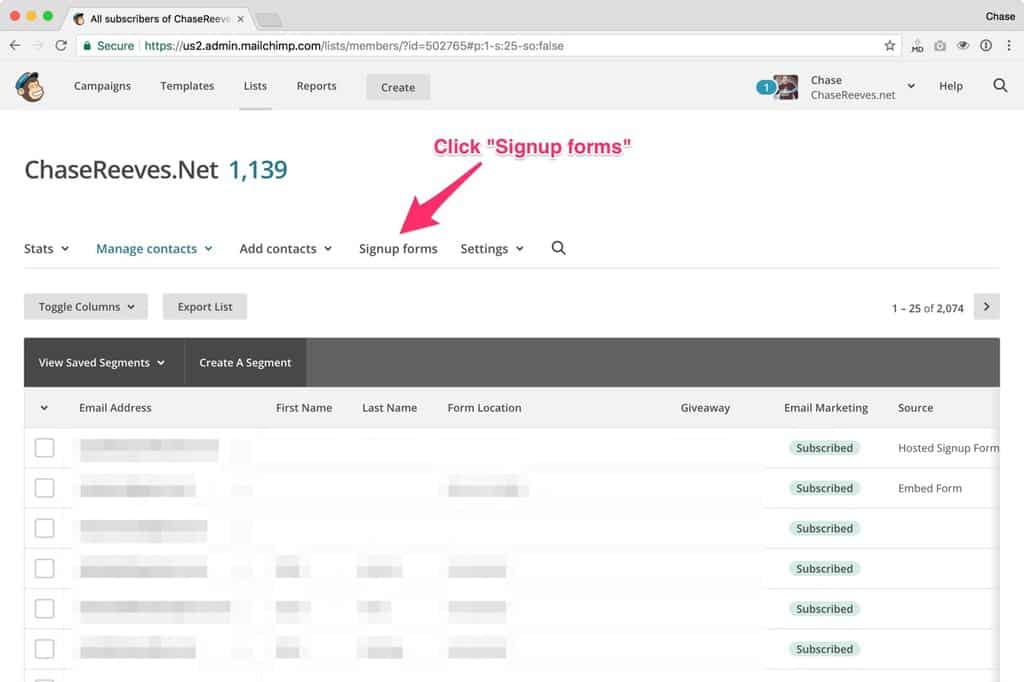

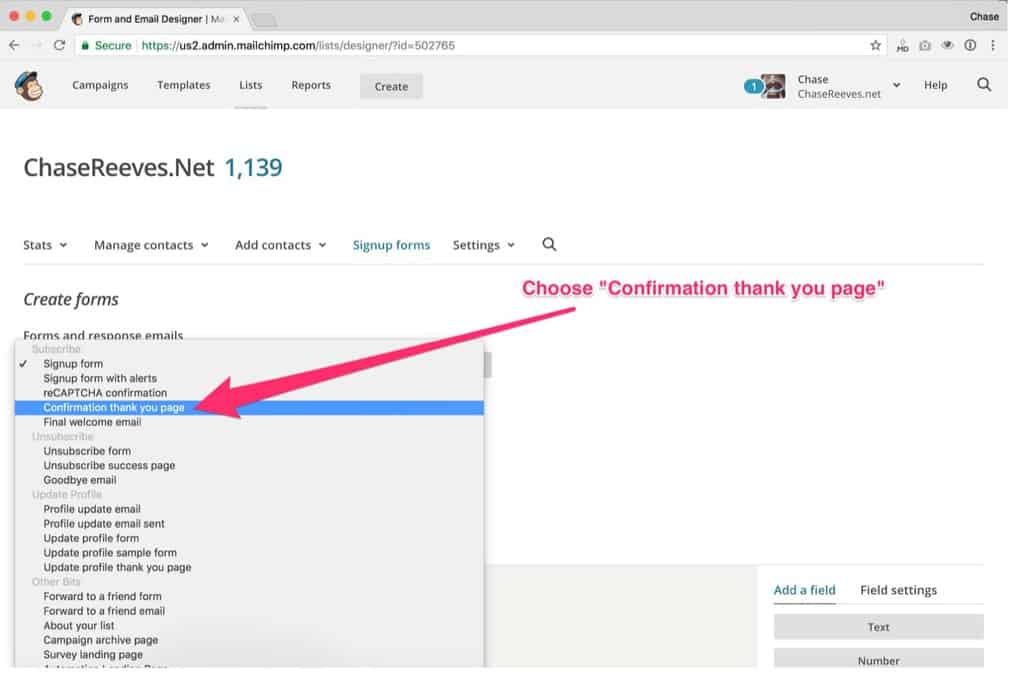

Custom Thank You Page in ConvertKit:
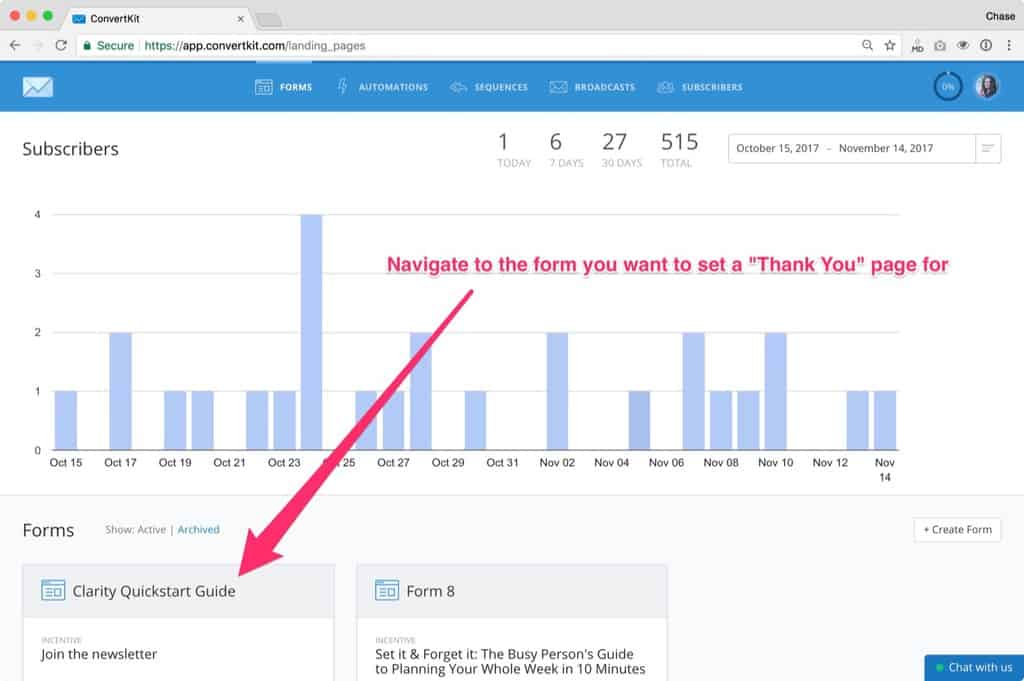
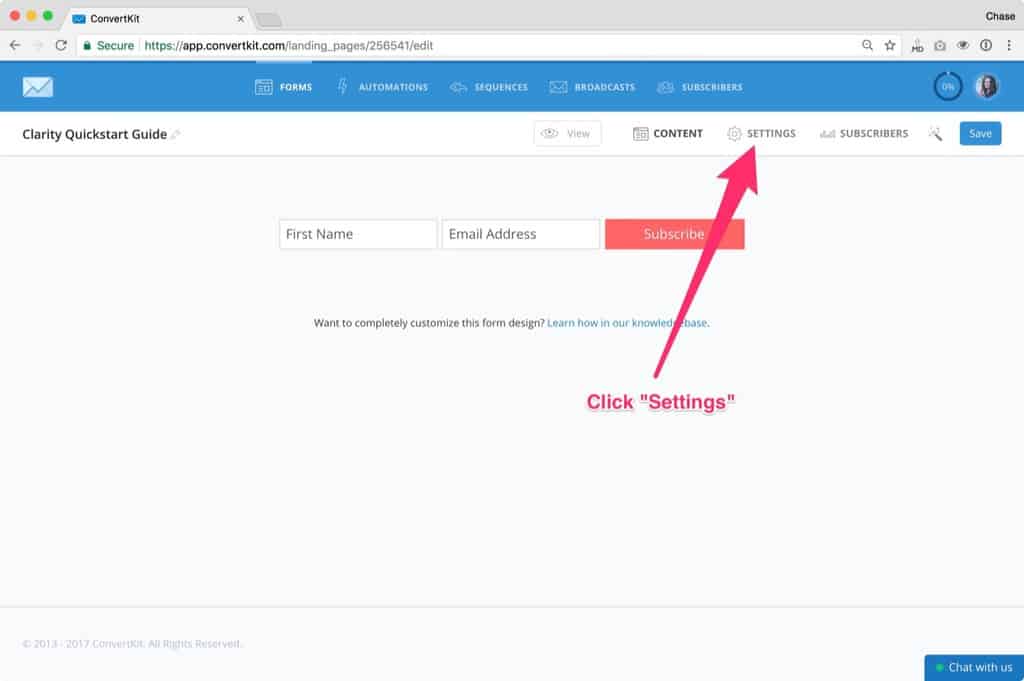
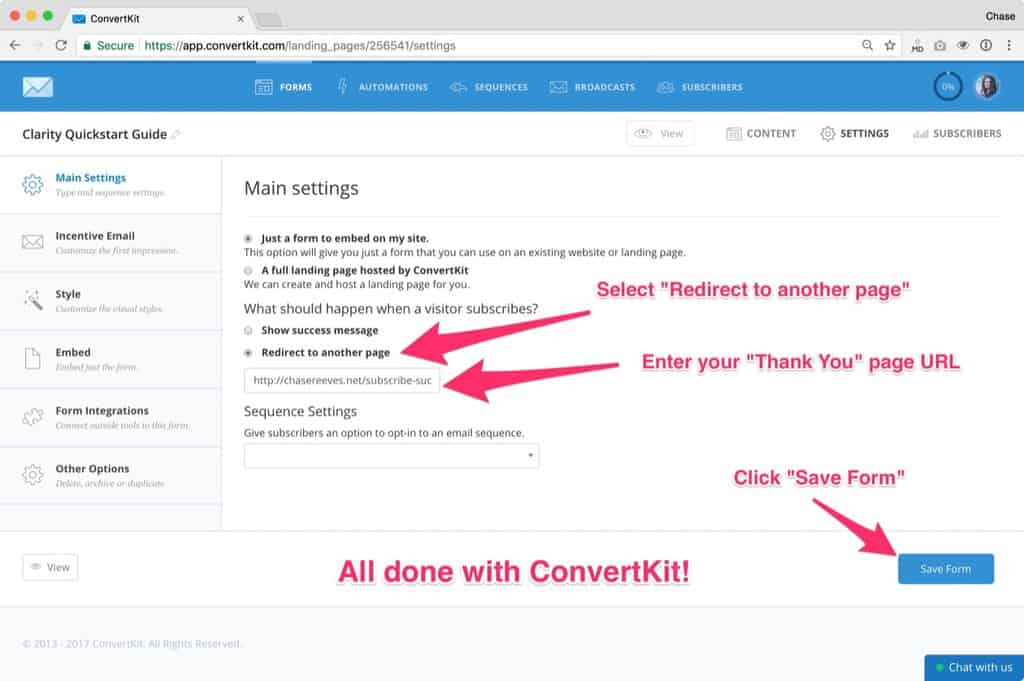
Tell Google Analytics to track visits to this “Thank You” page as Goals
Every time someone visits this thank you page Google Analytics will count that as a goal. You just gained a new relationship!
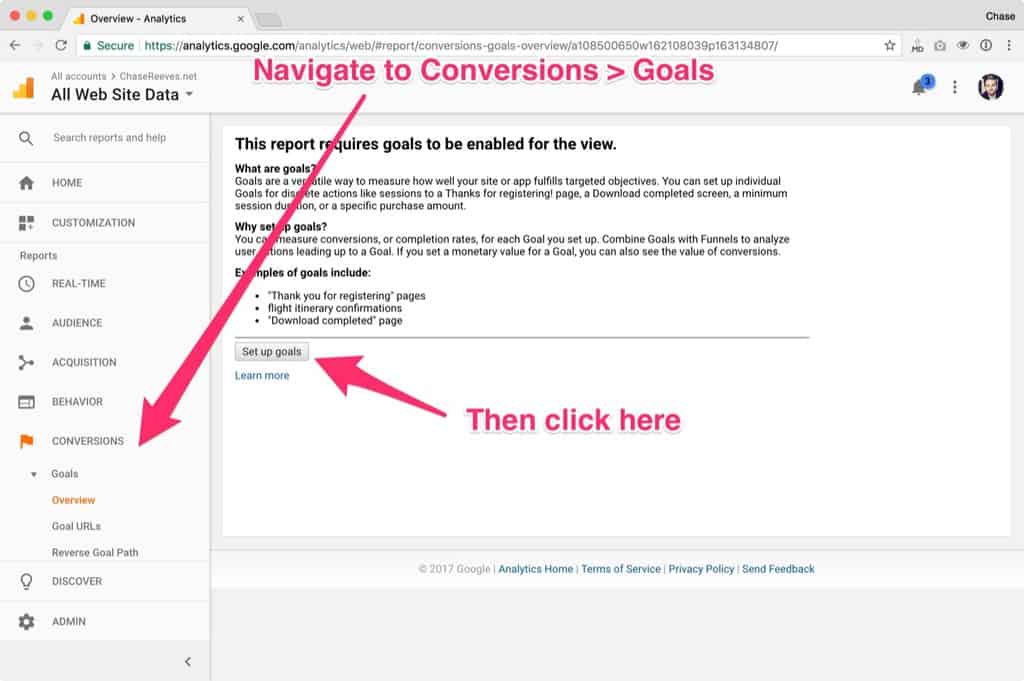
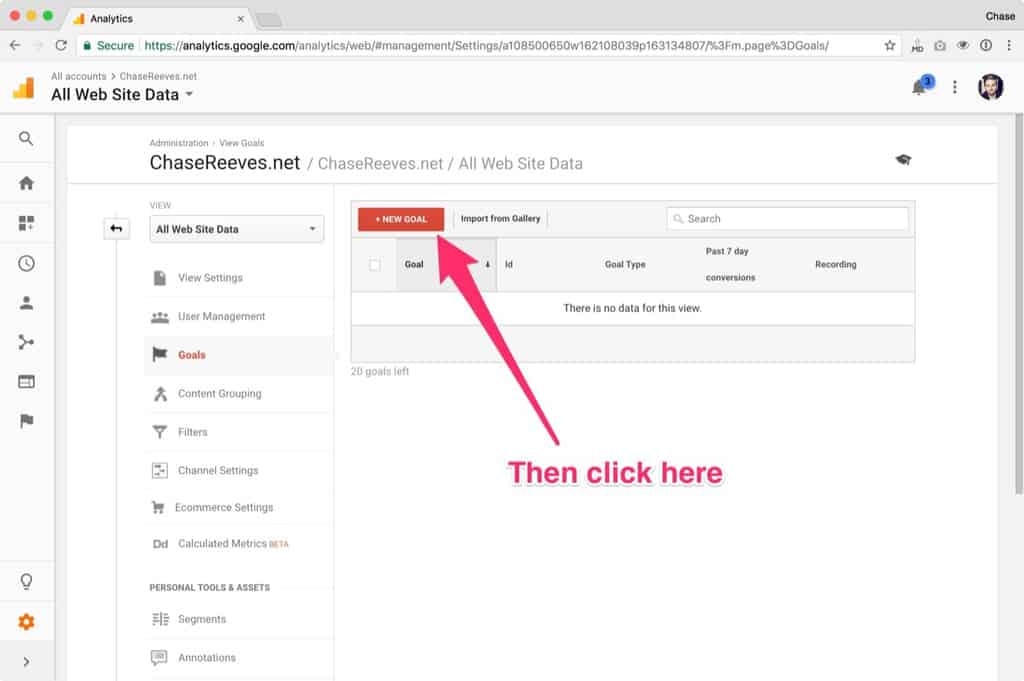
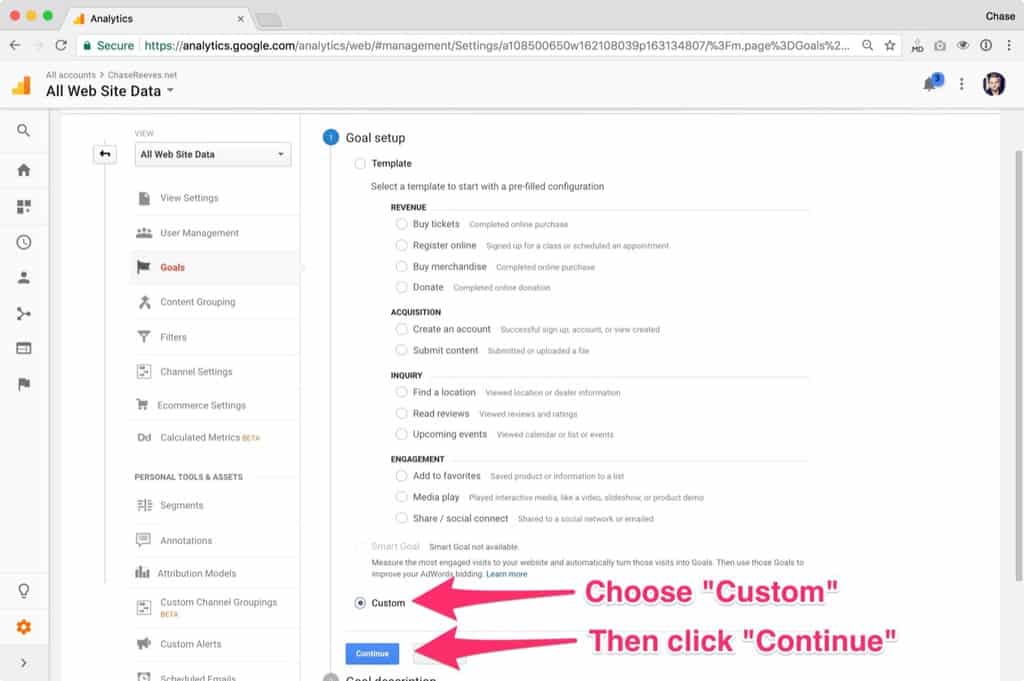

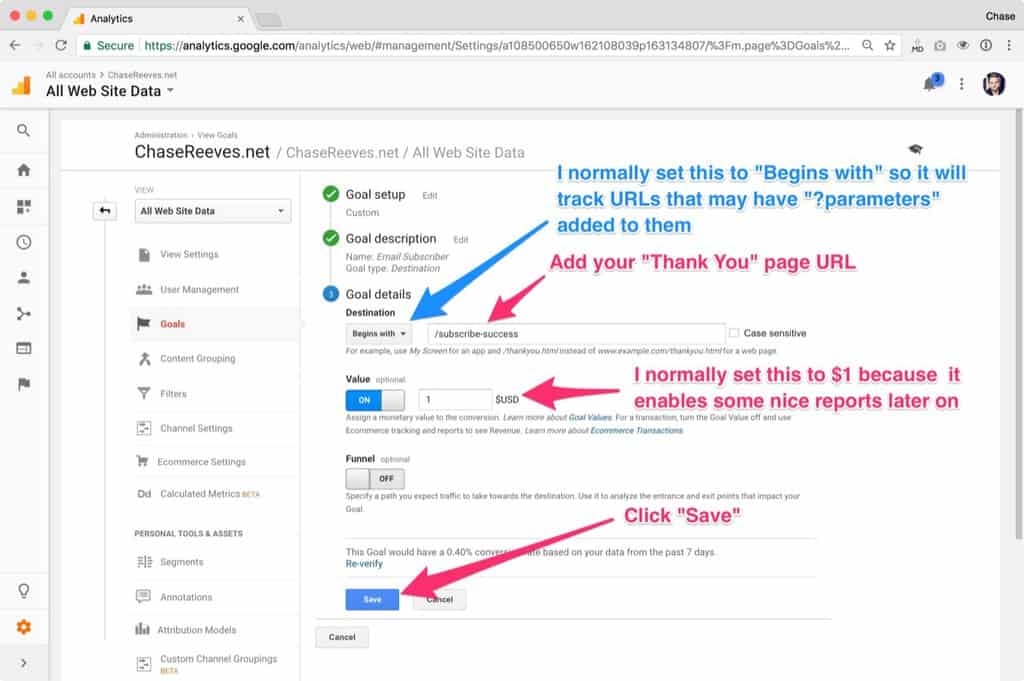

Now you’re tracking email signups in Google Analytics!
In the weeks to come Google Analytics will be tracking any new email signups as goal conversions.
- Now you’ll be able to tell — WITH DATA! — which pages are the most effective at causing conversions on your site.
- You’ll also be able to make important strategy decisions based on your new data.
- These are the kinds of strategy decisions we’ll be teaching you how to do in the Website Tuneup Course, but if you’re experienced on the web already this data will help you come up with new strategies on your own!
Earn a living doing something you love.
Grow an audience and get paid for your work as an independent creator. Fizzle is where creators come to learn, share and make progress toward their online dreams.
I’ve taken a lot of courses and been involved in several paid communities since I started my business, but I’ve never ever felt like anyone CARED as much about seeing my reach my goals as the Fizzle Team. They show up for me as much as I show up for myself. Thank you SO much, you guys!
 Claire Pelletreau
Claire Pelletreau
ClairePells.com
📓 Articles & Announcements
-
8 Experiments to Spice Up Your Podcasting Routine
Is your podcast routine stuck in a rut? If so, we’ve got just what you need! Jane Portman from Userlist joins us on the blog today to share her podcasting genius. Keep reading for 8 experiments you can try when your podcasting routine needs spicing
-
Introducing Fizzle 2.0
Today is an exciting day for Fizzle. We’re announcing a complete refresh of Fizzle, including every aspect of our user experience – courses, content, live events and more. Since we first opened Fizzle in 2012, we’ve provided thousands of entrepreneurs and creators with training, coaching and community. Today, this refresh marks
-
The Secret to Creating Consistent Content (that nobody’s talking about)
Hands up if you easily create consistent content week after week without fail. My guess? Since you’re reading this article, that’s probably not the case. Despite what you may be thinking – you’re not alone. Lots of content
🎙️ Podcast Episodes
-
The EXITpreneur’s Playbook with Joe Valley
Joe Valley is an Author, Guest Speaker, EXITpreneur, Advisor, and Partner at Quiet Light. He has also built, bought, or sold over half a dozen of his own companies. Over the last nine years, Joe has mentored thousands of entrepreneurs whose goal is to achieve their own eventual exit. He
-
R&D Tax Credits with Tiffany Bisconer
Tiffany Bisconer is a CPA with over 20 years of accounting and tax experience. Tiffany worked with one of the top certified public accounting firms before becoming director of Acena Consulting. She combines her private industry and public accounting experience to work with CPA firms and directly with business owners
-
Behind the Scenes: Fizzle 2.0
This has been an exciting month for Fizzle! We recently announced a complete refresh of Fizzle, including every aspect of our user experience – courses, content, live events and more. Since we first opened Fizzle in 2012, we’ve provided thousands of entrepreneurs and creators with training, coaching and community.




